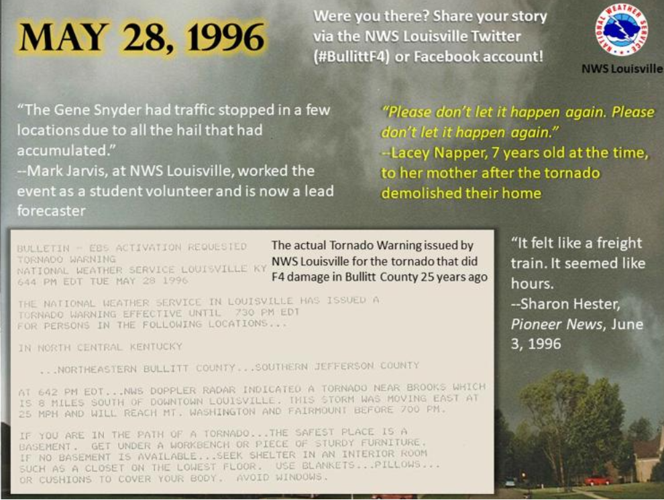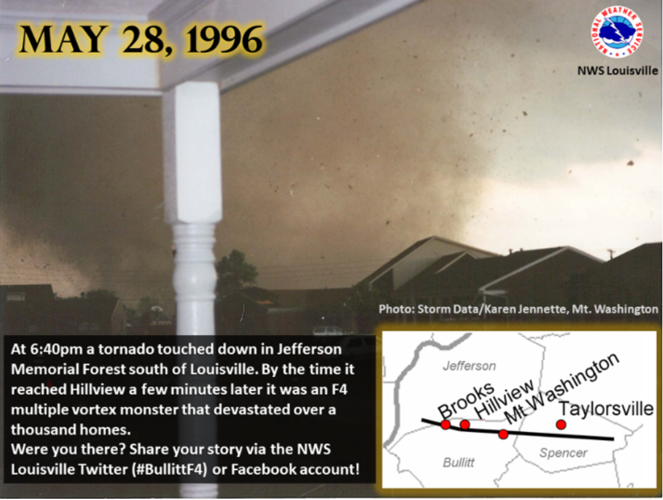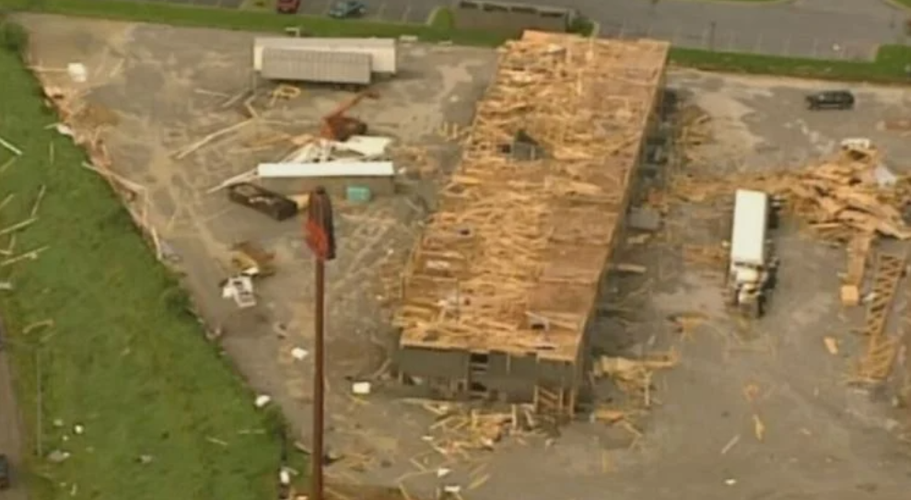Twenty-nine years ago today an F-4 tornado crossed through our communities causing more than $100,000,000 in damage. Miraculously no one was killed and only 10 people were hurt by this tornado that was on the ground for 30 miles. At its widest it was half a mile wide!

On May 28, 1996, a tornado's formed in Jefferson Memorial Forest, going on a 30-mile path of destruction through Bullitt and Spencer counties. (WDRB photo)
The tornado started its path of destruction in Jefferson Memorial Forest in southern Jefferson county. It strengthened in Bullitt county to an F4, then moved into Spencer county where it produced F3 damage. It picked up east of Taylorsville Lake after damaging more than 1000 homes. May 28, 1996, was a Tuesday, and it was Kentucky primary election day. The storms hit in Bullitt County just before 7 p.m.

On May 28, 1996, a tornado's formed in Jefferson Memorial Forest, going on a 30-mile path of destruction through Bullitt and Spencer counties. (WDRB photo)
The storm actually started much farther west. It became strong enough in Dubois county to get a Severe Thunderstorm Warning and produced golf ball size hail in Crawford county, Indiana. That's also where this storm split into two separate pieces. Both produced hail, but the southern part of this storm is what produced a tornado.

In Harrison county, Indiana, the southern cell produced an F-2 tornado that was on the ground for ten miles. Then the cell crossed over the Ohio River, dropped quarter-size hail near Valley Station, and the new, stronger tornado formed over the forest. Witnesses reported multiple vortices swirling around the tornado.

It's rare to see a "splitter" produce a tornado this strong because two cells are now feeding off the same energy. It's harder for the storms to intensify as much in those circumstances.

On May 28, 1996, a tornado's formed in Jefferson Memorial Forest, going on a 30-mile path of destruction through Bullitt and Spencer counties. (WDRB photo)
Remember the F or EF rating of a tornado is determined by the damage it did, not because we were able to measure a certain wind speed in the storm. We started using the Enhanced F scale (or EF scale) in 2007.


















